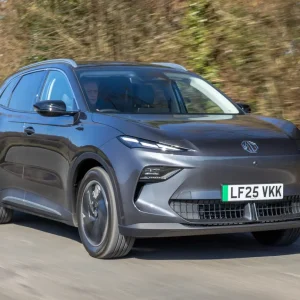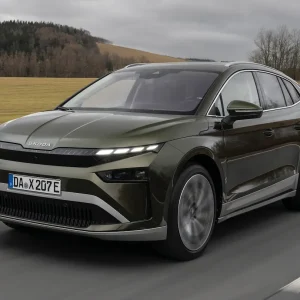The Seat Ibiza was a key pillar of the Seat brand’s success since the first-generation car was launched back in 1984. 37 years on, five-generations later and almost six million sold – the current car has received its mid-life refresh.
Outside, the latest Ibiza’s chiselled looks are largely unchanged, the only differences include LED headlights at the front, with Eco LEDs on SE and SE Technology trims, and full LED technology fitted to FR models upwards. From the side, there are new alloy wheel designs. At the back, like the all-new Leon and updated Ateca and Tarraco models, the ‘Ibiza’ badging is in embossed handwritten lettering. There are also two new colours, bringing the total available to nine.
Inside, the Ibiza’s been through what seems like a design and technology revolution. It remains the same sensible, roomy and well-made space. Gone is the hard plastic dashboard that detracted from the solid feel of this Seat’s interior. Instead, the new dashboard has a soft-touch feel to the top, with a metal-look centre on the FR trim car we drove, plus LED illuminated air vents. It is not all good news though, as the lower half of the dashboard and door trims still look like they are made of the same hard, scratchy plastic and the red air vent surrounds are a bit gaudy in our opinion. Although Seat tell us that if drivers don’t like the coloured rings, they can be swapped to grey surrounds free of charge.
Other Ibiza interior improvements centre around the connectivity, with the integration of the wireless Full Link system. Seat claim the new floating touchscreen that sits on the top of the centre console will make life easier for drivers, by making contact lists, music and navigation accessible via the screen. Or, via the integrated controls on the new three-spoke multi-function steering wheel. An embedded eSIM means the Ibiza will never lose its connection to the digital world, allowing access to the latest infotainment apps, with new digital products and services available throughout the car’s lifetime. It is the same system, first seen in the Leon, and we found the menus overcomplicated to use.
The next level of connectivity that’s also being rolled out at the same time, is the introduction of the Seat Connect app, which works via a smartphone device, giving remote control to a range of functions that maximise owner enjoyment and safety.
Elsewhere, a range of new driver assistance systems debut, including Adaptive Cruise Control (ACC), Front Assist, plus a Tiredness Recognition feature. Then there’s Lane Assist, which keeps the Ibiza centred in the lane, while Traffic Sign Recognition means the driver will always know the speed limit of the road they are travelling on. High Beam Assist uses a front-facing camera to detect vehicles and switch between low and high-beam as necessary.
Engine choices are unchanged, and are made up of three 1.0-litre, three-cylinder petrol engines with 79, 94, and 109hp outputs. Already a popular fleet choice, Seat believe the 94hp engine we drove will be the most popular choice, offering a competitive 28% Benefit-in-Kind (BIK), a low 35% total cost of ownership figure and up to 51.4mpg WLTP consumption.
On the road, the Ibiza feels much the same as before; the refined engine is torquey and is mated with a slick-shifting five-speed manual gearbox. Although it needs to be worked to give its best, the steering is also well-weighted, there is good grip in corners and very little body roll.
The latest changes, especially the interior, mark this Ibiza out against increasingly tough supermini opposition.
Seat Ibiza 1.0 TSI FR Manual
P11D: £19,760
Residual value: £7,648
Depreciation: £12,112
Fuel: £7,061
Service, maintenance and repair: £1,695
Cost per mile: 34.78p
Fuel consumption: 52.3mpg
CO2 (BIK %): 123g/km (28%)
BIK 20/40% a month: £92.21/£184.43
Luggage capacity: 355 litres
Engine size/power: 999cc/94hp





